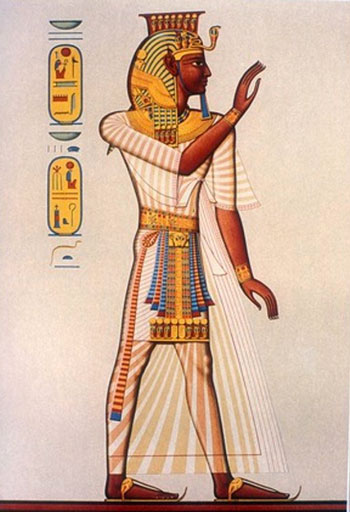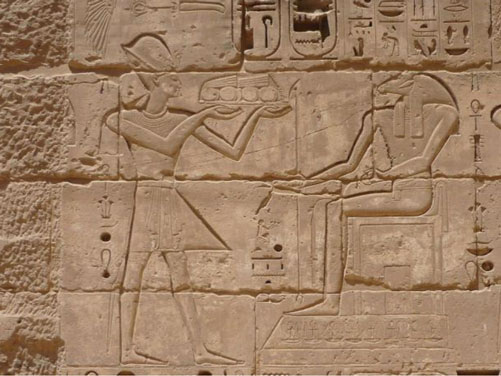Ramesses III At the Battle of the Delta
Ramesses III was the second Pharaoh of the Twentieth Dynasty in Ancient Egypt. He is thought to have reigned from 1186 to 1155 BC and is considered the last great monarch of the New Kingdom to wield any substantial authority over Egypt. Under his long reign, Egyptian saw a decline in her political and economic power, which precipitated a series of invasions, including that of the Sea Peoples.
Known for his robust military strategies, Ramesses III saved Egypt from collapse at a time when many other empires fell during the Late Bronze Age, even though the invasions had weakened it. His defeat of the Sea Peoples and others earned him the moniker “Warrior Pharaoh.”
Many historians perceive Ramesses III as the last great pharaoh of the New Kingdom. At the Battle of the Delta, somewhere around the year 1175 BC., Ramesses III, led the Egyptians to face off against the mysterious Sea Peoples, a group of maritime raiders mentioned in several Egyptian sources. These include the Peleset (Philistines), Tjekker of Crete, Shekelesh (Sicilians), Shardana / Sherden (Sardinians), and Lukka (possible ancestors of the Lycians).

The Sea Peoples, expert Mediterranean sailors, attempted to invade Egypt by land and in ships, at a time when the Egyptians were inferior seamen, and their ships, technologically less advanced. But Ramesses III devised a cunning plan. Instead of engaging his enemies in open waters, he allowed them to sail unopposed into the Nile Delta. Powered by sail and oars, the Egyptian ships were more maneuverable in this terrain than their opponents’ sailing ships, thus giving them an advantage.
On the Nile banks, bowmen Ramesses III placed to prevent the Sea Peoples from landing on Egyptian soil and Egyptian ships to fire their deadly arrows at the enemies. The Egyptians placed grappling hooks to capsize many of the enemy ships. Armed with swords and spears, the Sea Peoples failed to counter-attack.
The ancient Egyptian pharaohs often commemorated military victories over their enemies by having them depicted on the walls of great monuments. That Battle of the Delta, fought by the pharaoh Ramesses III against the invading Sea Peoples, is one of the most famous conflicts recorded on the walls of an Egyptian temple.

Several ancient Mediterranean civilizations, including the Hittites, Mycenaeans, Mitanni kingdoms, and their cities, came to an end around 1175 BC. Some historians attribute their downfall to the Sea Peoples. An inscription on the walls of the mortuary temple of Ramesses III in Medinet Habu, where the pharaoh’s victory is commemorated, signals the ferocity of these raiding Sea Peoples. The text reads, “Not one stood before their hands.”

Ramesses III At The Battle of Djahy
Before the Battle of the Delta, Ramesses III first defeated the “Peoples of the Sea” was at the Battle of Djahy. Along Egypt’s easternmost frontier (modern-day southern Lebanon), Ramesses III engaged and defeated an army of the Sea Peoples that attempted to invade his empire by land. Knowledge of this battle comes from Medinet Habu. As no other sources have corroborated this, others have suggested that Ramesses III might not have routed an army at Djahy but had instead gained a victory over a group of refugees fleeing their cities and settlements destroyed by the People of the Sea. If true, the walls of Medinet Habu would not depict this.


Ramesses III‘s victory at the Battle of the Delta saved the Egyptians from conquering by the Sea Peoples. However, it left the Egyptian treasury drained, its army exhausted. This contributed to the end of Egypt’s glory days as an empire. Things declined even further after Ramesses III’s death. The Philistines then colonized Egypt’s eastern territories. This weakening of Egypt would lead to the Third Intermediate Period about a century after the Battle of the Delta.
Ramesses III was the son of Setnakhte and Queen Tiy-Merenese. One of his secondary wives, Tiye, their son Pentawer, and a group of high officials led the Harem conspiracy that saw Ramesses III assassinated.
If you like this story, please subscribe and share, if possible
